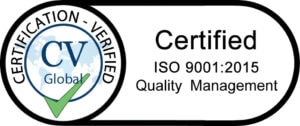5 questions to determine if you're in control of your mobile devices.
Home / Blog / Future-proofing / 5 questions to determine if you’re in control of your mobile devices
If you can’t answer these five questions, you may need to take steps to regain control of your mobile estate.
You can’t avoid the fact that mobile devices are an everyday part of all businesses today. Employees will increasingly ask for permission to use smartphones, tablets or other tools in their work to improve their productivity and enable them to work more flexibly.
But mobile devices will make their way on to firms’ networks whether they are permitted or not, so it’s vital IT departments act to take control. If you don’t have full visibility into your estate, you’ll have no idea what devices you have, what they might be costing you, or what the potential risks might be.
So, how do you know if you’re really in control of your mobile estate? After all, if you don’t have visibility, you may not even know what you’re missing. With this in mind, here are five key questions you need to be asking about your mobile operations, as well as why they’re important and what the consequences might be if the answer to any of them is ‘no’.
1. Do you know what your entire estate looks like?
Before getting into specific details, it’s important to have a clear overview of everything that is happening in your business’ network. Having a comprehensive understanding of your entire IT estate, including any mobile devices, is an essential first step in planning your strategy.
If you aren’t able to describe in detail what devices are connecting to your network, who is using them, what platforms are being used, and where any potential issues might lie, you won’t be able to measure the impact of any efforts you make to improve things.
For example, if you don’t know how many mobile devices you have in a given location, you won’t be able to determine what level of networking infrastructure you’ll need to put in place to ensure they can all connect seamlessly.
Elsewhere, if your remote sales agents are using their own devices to connect to the corporate network when in the field and you’re not aware of it, this could create security holes. As companies grow, it can be easy to develop blind spots where activities are taking place without your knowledge, so shining a light on these is an essential first step.
2. Do you know what devices you’ve bought/have been brought in by workers?
Understanding the make-up of your mobile estate is essential, as it can have a significant impact on how you go about managing your devices and planning for the future. Start by looking at the devices themselves – how many different models from different manufacturers do you have? What is the ratio of Android to iOS smartphones? Are there any devices using outdated technology, such as Windows Mobile, that will need to be migrated?
These are all issues that can affect how you go about managing your devices, as the more fragmented your estate is, the more work will be required to get it under control.
Then, there’s the issue of personally-owned devices. If not handled correctly, these can be one of the biggest security vulnerabilities your company faces. Prohibiting the use of these gadgets outright is unlikely to be effective, as employees will always ignore such directives if they believe it will make their work less convenient, so you need to take a more pragmatic approach. But this means you need to be fully aware of who’s using them, and what they’re doing with them.
3. Do you know where all these devices are?
Paying close attention to who is using mobile devices and where they are located gives you valuable insight into what is going on within your network, and can help you streamline your activities to improve productivity and cut costs.
Are there areas that seem to be using fewer devices than others? And if so, is this because they are less necessary – in which case you can prioritise resources accordingly – or does it mean employees aren’t working as effectively as they could be?
You may also be able to make decisions based on other trends you spot. One example may be if you are seeing a spike in repair tickets from a certain department or location, which can be a sign you need to look at this closely to determine what the issue is and how it can be fixed. If you have many reports coming in from warehouse staff, for example, this could be a sign you need to equip your workers here with more rugged devices.
4. Do you know what you need to buy next?
A good strategy needs to plan for the future, but if you’re buying replacements and upgrades on an ad-hoc basis, you may end up overspending on devices that are not necessarily the best-suited to your environment. It’s important to have a clear plan that dictates when upgrades will take place, what equipment will be brought in and how this will integrate with the existing estate.
If you’re waiting until devices fail due to age or are no longer able to keep up with your latest applications, this will be costing you productivity as workers struggle with slow gadgets. You also don’t want to be surprised by issues such as reaching the end-of-life for older platforms, so you need a migration plan in place long before official support comes to an end.
5. Do you know what to do if a device breaks?
Finally, it’s important to have a clear plan for what to do if – or, more likely, when – a device breaks. Especially as companies grow and the number of mobile tools it has to deal with increases, it will not be practical or efficient to deal with this on a case-by-case basis.
If someone does suffer a problem with their device, they need to know exactly what they have to do to report it, and what the next steps will be. If their gadget is essential to their work, they need to be issued with a replacement immediately, and everyone needs a clear idea of exactly how long it will be before they get their own item back – or in what circumstances it will be faster or more cost-effective to order a permanent replacement.
Without a clear plan, it’s all too easy for delays to creep in and for individual repair jobs to become lost or forgotten. And this loss of control can lead directly to reduced efficiency, higher costs and a frustrated workforce.
If you’ve answered ‘no’ to any of these questions, now is the time to act and ensure you can bring your mobile estate back under control.












